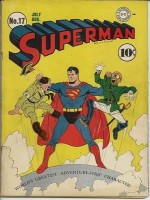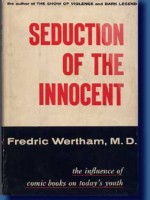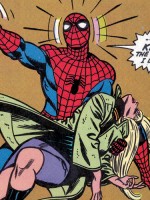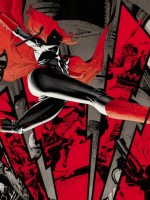The Renaissance Age
Comic books have existed in three distinct phases that have been categorized to identify the era, the characters, and the tone. Ask any comic aficionado and they’ll be able to give you at least a ball park explanation of the defining features that create the “Golden Age”, the “Silver Age”, and the “Modern Age” of the medium. We now find ourselves in an era that simply doesn’t fit into the current “Modern Age” definition. It’s creativity and success, like a period in human history itself, should be called a Renaissance.
The Golden Age
The Golden Age of comics was a time when the innovation and pride of American culture seeped into everything from media to the economy. During this time creators gave us some of the most iconic characters that have ever graced the page. From Superman to Captain America, Batman to Namor, Green Lantern to the Spirit, characters that fit a mold and expressed the desires and ideologies of a nation. The foundations for an entire medium were laid during this time, whose ramifications would echo through the course of modern American culture.
The Silver Age
The Golden Age was a time for character development and mainstream establishment, the Silver Age was a time to realize the importance of art. This era in comics coincided with a general cultural embrace of nonconventional artwork that hadn’t been seen before.
Andy Warhol, Jackson Pollock, and other bohemians were reshaping the understanding of artistic expression, Jack Kirby, Neal Adams, and Steve Ditko were giving life and motion to an overlooked imaginative expression of youth. The industry suffered after the real-life super villain Dr. Fredric Wertham started a campaign against comics as a scapegoat for teenage delinquency. If it weren’t for the perseverance and creativity of the artists and writers of the Silver Age, we would have a very different looking comic landscape, if there even were one.
The Modern Age
Some may argue that before the Modern Age a Bronze Age of comics occurred. However the defining features, at least from a literary standpoint, tend to blend into the features of the Modern Age, so much so that I find it hard to really refer to them as separate eras.
Essentially, this era can be summed up in two specific works: Batman Year One and Watchmen. This was a time when readers were getting bored of the unrealistic sensationalism that the Golden Age and the Silver Age thrived on.
The Modern Age introduced readers to more adult, socially relevant themes like political, environmental, cultural, and substance abuse issues. This entire era was built around the idea of maintaining relevance. Some truly great storytelling came out in this age of comic’s history like the death of Gwen Stacey, the Demon in a Bottle, The Dark Knight Returns, and of course Watchmen. This was also a time when we really saw a departure from the mainstream superhero genre and more opportunities for creators to try their hand at new characters who existed in new sub-genres.
The Renaissance Age
All this history brings us to the New Age, the Renaissance Age. Through a self-inflection of the entire industry, creators are able to take comics for what they are and literally break the borders that have long been adhered to. In both artwork and writing we are benefitting from the most inventive storytelling the industry has ever seen.
Creators like Grant Morrison, Scott Snyder and Geoff Johns have each been able to take characters to places that could only be done in comic books. Building from every era before, Snyder’s run on Batman is dark and twisted like the Modern Age but it also wouldn’t be what it is without Greg Capullo’s creative art, and the importance of artwork is something that is very defining of the Silver Age.
Francis Manapul’s Flash and J.H. Williams III’s Batwoman are prime examples of the lines that are being blurred between artist and writer, to the extent that after all these years, artists are finding new ways to elevate their craft, and create a more interactive experience.
It’s hard to pinpoint when the Renaissance Age specifically began, but I believe it had something to do with the explosion in sub-genres, where any interest could find a home in comics. While most non-superhero genres used to revolve around adventure, (crime-adventure, historical-adventure, etc.) now creators focus on a style and can stick with it, anything from horror to noir, science fiction to faction, political to dystopian.
Allowing this much creative room has not only attracted new readers but has introduced old readers to new material and literary styles. Not every comic is necessarily a hit in this Renaissance Age, but thats o.k. because it is just a part of the natural growth of the industry.
Sooner or later we’re going to be able to weed out the material that simply isn’t relevant anymore. Some may prefer books with somewhat mindless action because of its simplicity, but we are certainly getting more comics that are clever, engaging and fulfilling than we ever have before, because of the trend that we as readers are leaning toward.
It’s an amazing time to be a fan of comics, a time when you can just about guarantee that every Wednesday you’ll read something that inspires you. We’re on the verge of an era when kids won’t want to be the characters they read about when they grow up, but rather the authors that write them.




